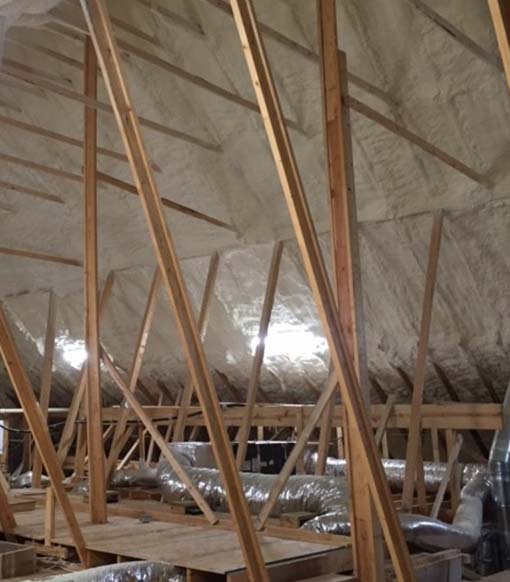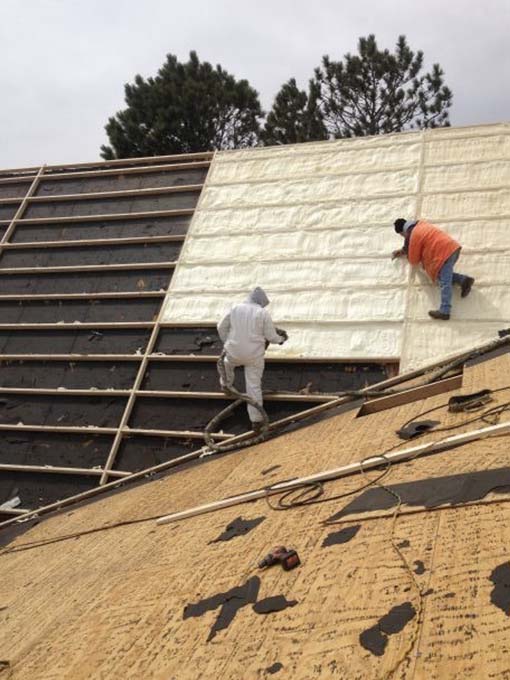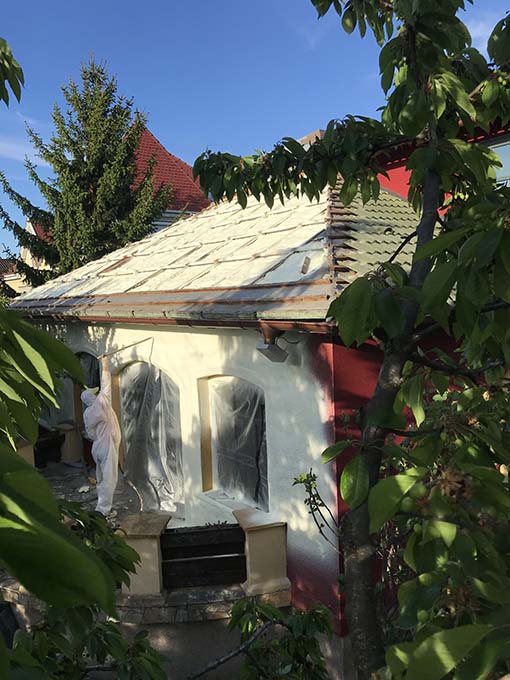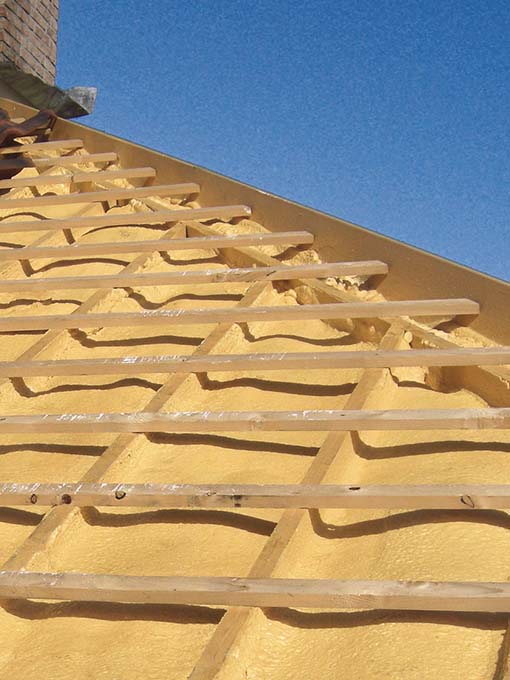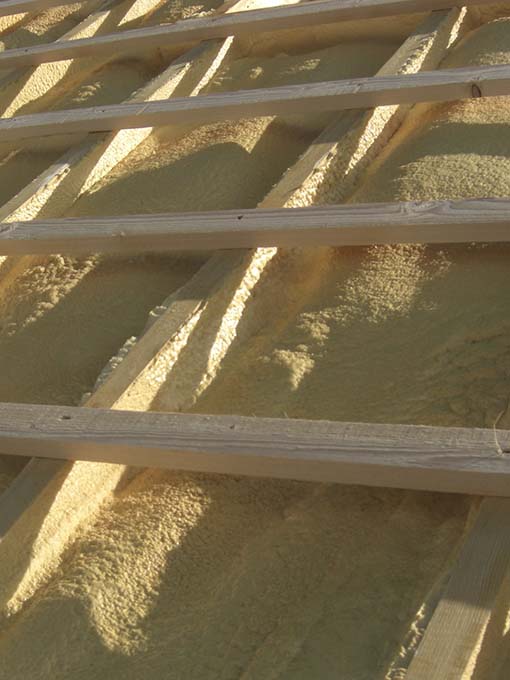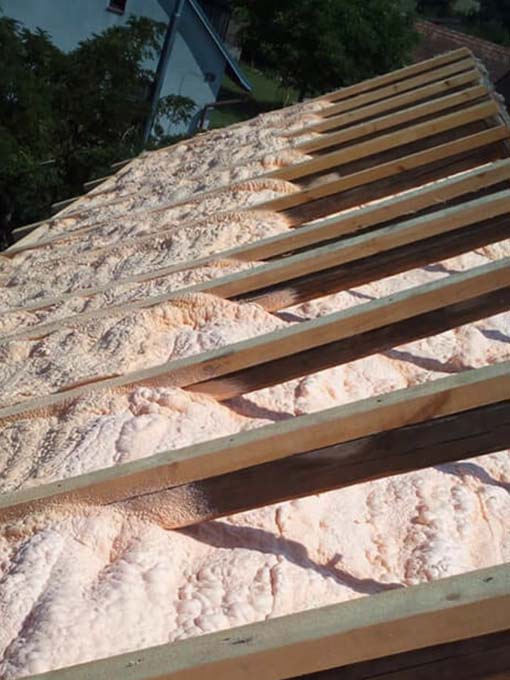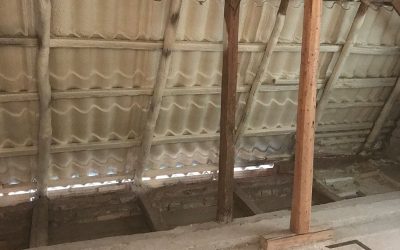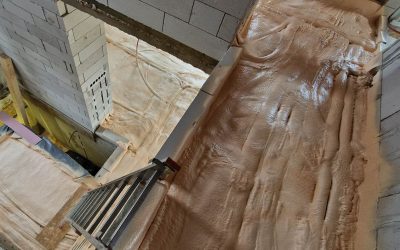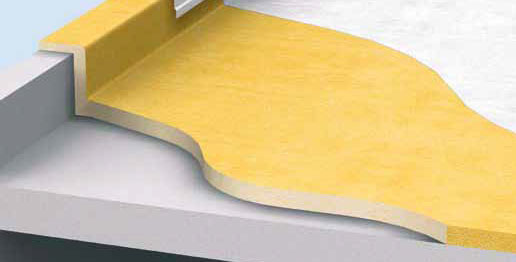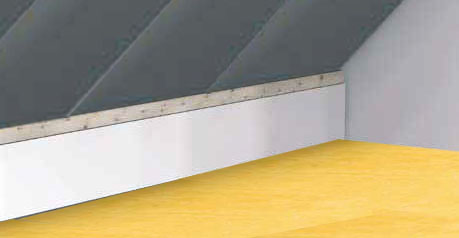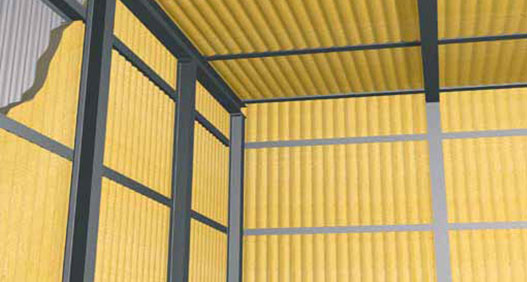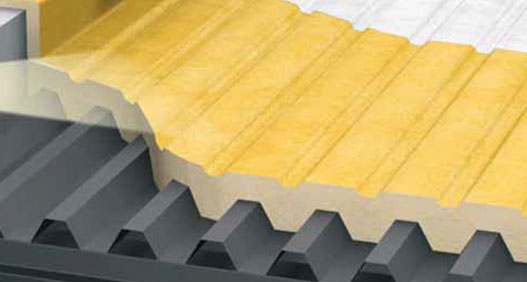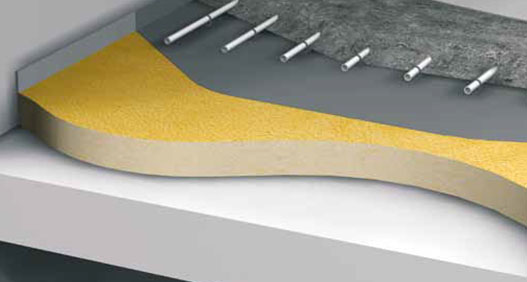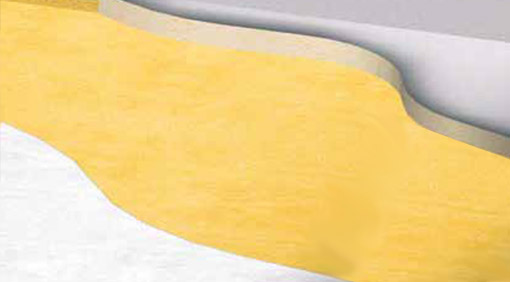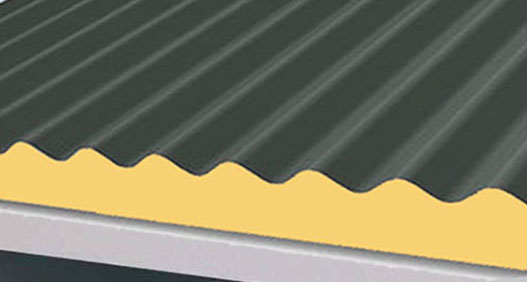Attic insulation
Polyurethane is the best insulation in the attic, between the rafters. We insulate from the inside or outside.
Material:
Closed/open cell
Progress:
300 m2/day
Thickness:
5-20 cm
Density:
15 or 35 kg/m3
Roof insulation from the inside
If the attic is not inhabited and the roof plane is not covered by plasterboard or paneling, we will start from the inside to insulate. The attic insulation will be really effective with the foam! It can be used on any construction materials used today. We insulate on foil, OSB board, plasterboard, or even directly on tiles. It is important that the material is vapor diffusive, and your house remains breathable!
Why is it unbeatable?
- Working with traditional insulating material, the 15 cm rafters make it impossible to install strong thermal insulation. This layer thickness of the closed-cell foam corresponds to 30 cm of cotton, so the rafters finally set no limits to insulation.
- The insulation provides waterproofing even in the smallest thickness. If your roof structure is in poor condition, this is a major advantage. Of course, even when standing under a new shell, it is reassuring that we are doubly protected against moving tiles and wetting caused by powder snow.
- The cotton used for attic insulation slips off and collapses after a few years. The closed-cell material we offer is rigid, it will never move. The strong material also statically strengthens the roof structure.
- The foam is joint- and seam-free and completely takes the shape of the roof plane to be insulated. It is airtight, the wind does not blow through it like traditional insulation.
Insulation of the roof plane from the outside
If the attic is already inhabited or the roof plane has already been sealed with plasterboard, instead of making a big fuss, from the outside we prepare the insulation of your home. This method is more expensive than working from the inside, between the rafters. We come to work with our own carpenters. Never we do not demolish the entire roof at once. As soon as we uncover a strip, we immediately insulate and put the tiles back. HEhe does not have to coordinate several professionals and worry about flooding caused by sudden thunderstorms.
Work progress
After removing the tile, we decide the fate of the old insulation in consultation with the customer. The old, slipped and collapsed cotton is usually removed from the roof and the hollow space that has been discovered is cleaned. Then we spread the foam on the receiving surface, which is usually the plasterboard or paneling bordering the living space. If the customer wants to install a new reception area, we attach foil or OSB sheets between the rafters. After installing the desired insulation, the tiles are returned to the roof.
FAULTS OF COTTON INSULATION
Cotton does not provide waterproofing. As a result of incoming moisture and steam, it rots and collapses.
Insulation is not seamless, thermal bridges are created. Gaps remain at the joints, air passes through the insulation.
Cotton for external impact it moves easily, but over the years it also slips away from gravity.
The rafters limit the insulation (15 cm). If there is still a way to place thicker insulation (for example, thanks to an expensive elevation), then it will come at the expense of the height of the attic.
Insects get through it, gnats make nests in it.
Difficult installation, big upheaval.
FOAM INSULATION
Even half the thickness is enough to achieve the same thermal insulation. The 15 cm rafter gaps accommodate up to 30 cm of foam equivalent to traditional insulating material!
Purfoam not only provides excellent thermal insulation, but also 100% waterproofing.
Perfect, form-following, gap-free insulation. Air does not pass through. Completely airtight layer!
Fast installation, insulation of up to 300 m2 per day is possible in accessible attics. Since the material and machines are on the truck - there is no upheaval.
Rodents don't like it, they won't move in!
Attic references
Corrugated roof insulation
Esztergom insulation reference When renovating a family house in Esztergom, insulation was an important aspect for the owner. Due to the previously uninsulated corrugated iron roof, the owners not only struggled with energy efficiency and heat loss, but also...
Insulation under the base concrete
Insulation under concrete foundation We worked again in Budaőrs on the insulation of a newly built, minmál building. The insulation under the base concrete and the insulation of the slabs with foam is an extremely important step in the insulation process of a single-family house. Proper underfloor insulation...
Rooftop Ózd
We worked in Ózd! Another attic insulation with foam! Closed-cell foam insulation is an innovative solution that has many advantages when used in the attic or on the roof plane. Excellent attic insulation: it has the best thermal insulation properties and...
Other uses
Request an offer!


